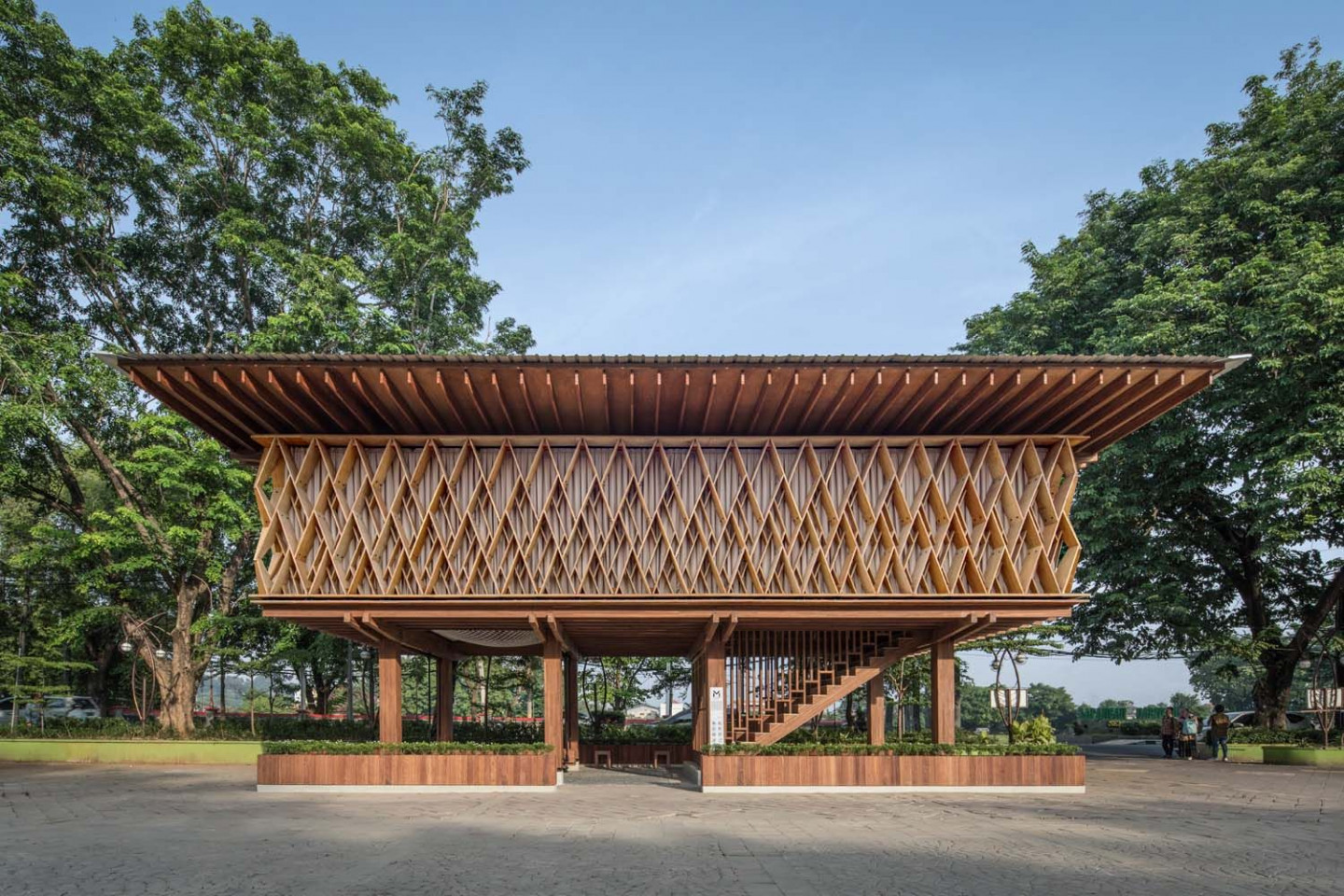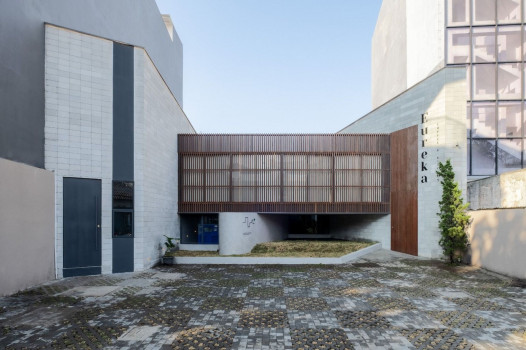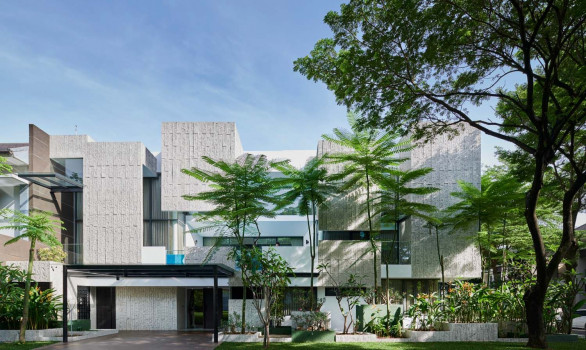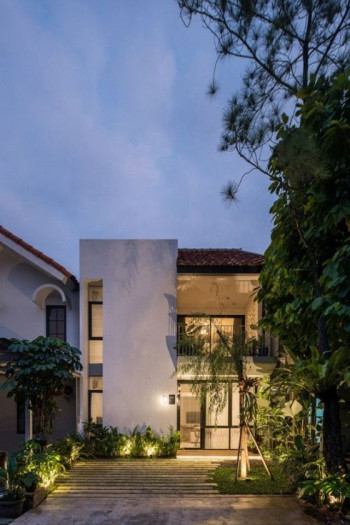SHAU’s Microlibrary in Semarang Exemplifies How a Tiny Building Could Bring Holistic Impacts



In 2016, Indonesia was listed as the bottom two of the 61 countries participating in a research project entitled World’s Most Literate Nations. Instead of ranking the nations on the basis of the populace’s literacy, this research focused on the attitudes, resources, and facilities. The result shows how libraries are not easily accessible, let alone being a popular place to visit.
While there is no significant nation-wide movement to improve the people’s interest to read, many organisations and local government programmes have been trying to address this issue. Initiatives such as mobile library and reading spots are common but not widely spread and sometimes not functioning well enough, especially when they are located in a noisy high-traffic public space. With the goal to improve people’s interest to read, primarily in low-income neighbourhoods, SHAU initiated the microlibrary project back in 2016.
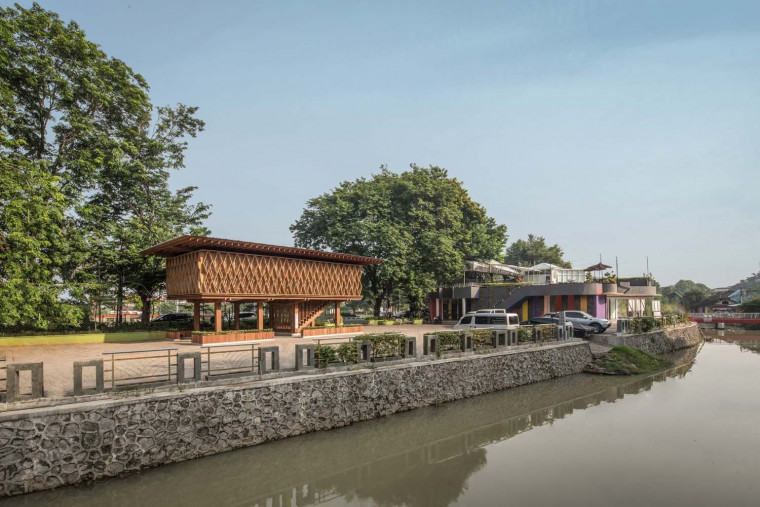
©KIE
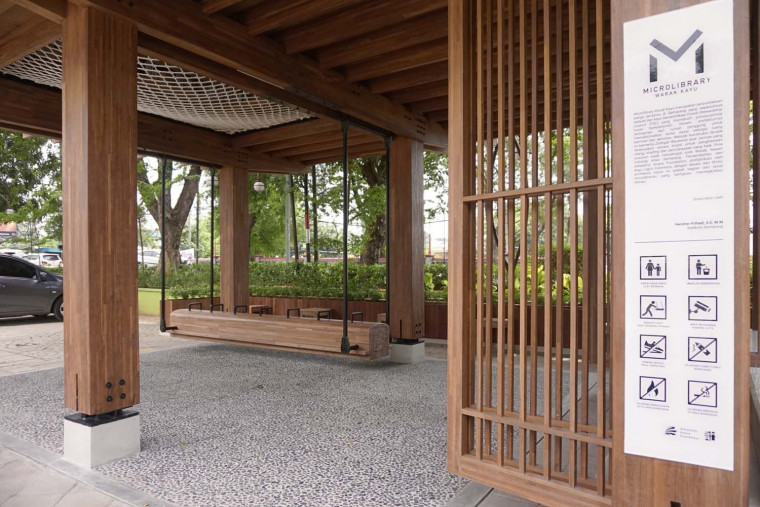
©SHAU Indonesia
The microlibrary projects are designed to provide communal functions apart from being a place to read so that people will be interested to visit more. This is reflected in their latest project, Microlibrary Warak Kayu in Semarang, Indonesia, located in a strategic public space. Built across a local tourist attraction called Kampung Pelangi, this tiny library aims to serve not only local visitors but also travellers.
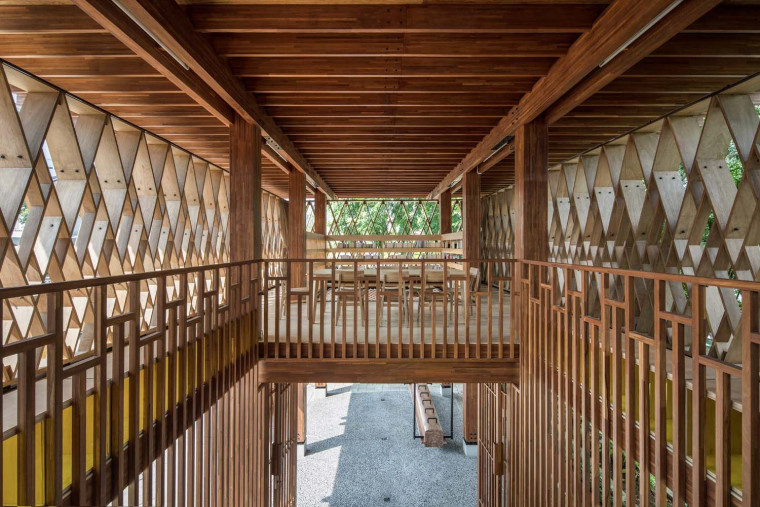
©KIE
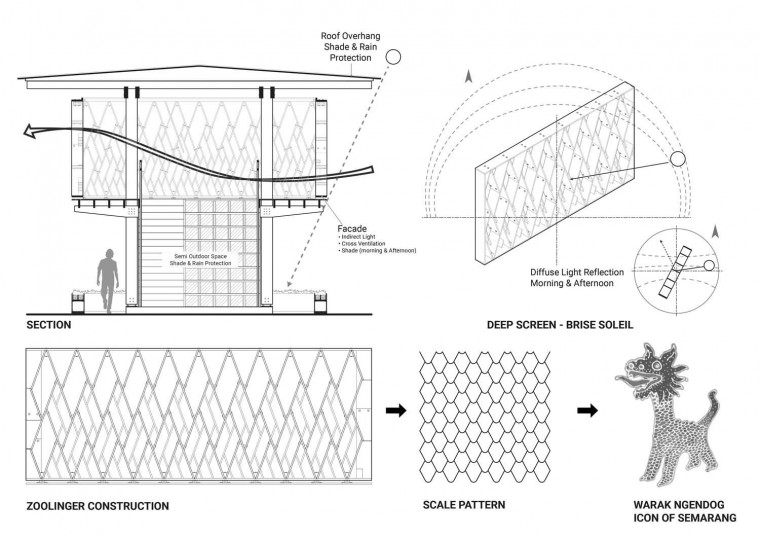
©SHAU Indonesia
With the potential of being a supporting node of a popular destination, SHAU shapes Microlibrary Warak Kayu to reflect the local narrative. As its name suggests, warak is derived from warak ngendhog—a local dragon-like mythical creature, which happens to be represented by the diamond-patterned timber façade. Furthermore, the use of stilt structure and mostly timber material embody the character of many traditional houses in Indonesia. This contextualised building brings affinity and appeal to the neighbourhoods and the visitors.
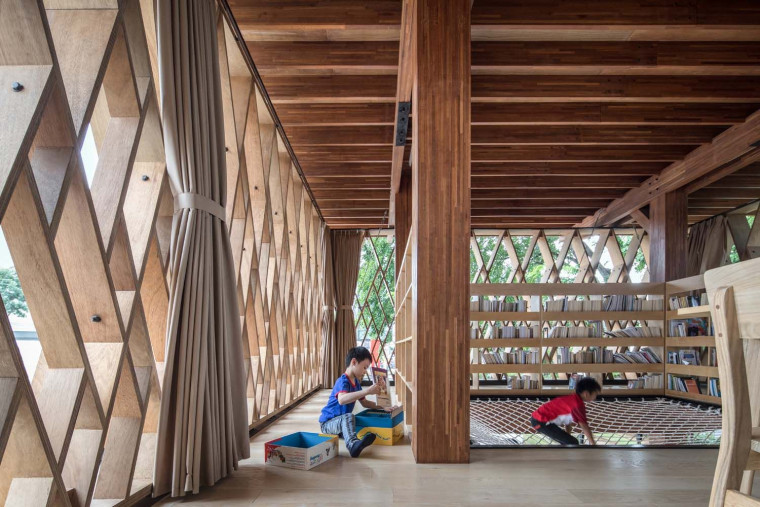
©KIE
The library-part of this building is also designed to be as pleasant as possible. Without too much formal layout like a common library, the interior design encourages visitors to find their own comfort while reading books, be it sitting on a chair, lounging on the timber floor, or laying on the hammock floor. Although there is no air conditioning unit, thermal comfort inside the building is almost constant throughout the year thanks to its thorough climatic design. The expansive roof overhang and deep brise soleil, for example, could block direct sunlight from entering the interior while also enable constant air circulation and adequate lighting during the day.
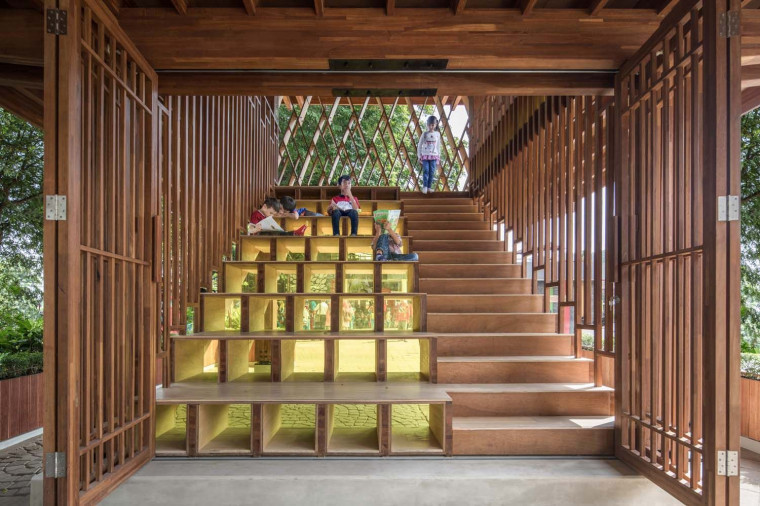
©KIE
Adding to its many features and functions, this building’s timber materials are sustainably logged from Kalimantan, locally prefabricated, and assembled on-site to reduce harmful impact towards the neighbourhood. If most libraries usually function as an information centre, Microlibrary Warak Kayu sets a better standard by providing not just a place to increase literacy but also a communal space that brings positive impacts on the local communities.




 Australia
Australia
 New Zealand
New Zealand
 Philippines
Philippines
 Hongkong
Hongkong
 Singapore
Singapore
 Malaysia
Malaysia


